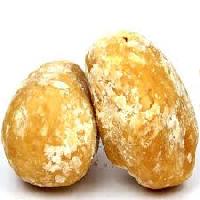The Trip of Sugarcane: From Harvest to Everyday Products
The trip of sugarcane is a complex procedure that begins with meticulous cultivation and culminates in a range of items that penetrate our daily lives. As we discover the different elements of sugarcane's trip, its duty in sustainability and the broader effects for our setting come into sharper emphasis.
Farming of Sugarcane
The farming of sugarcane is an important agricultural process that calls for particular ecological conditions and monitoring practices. Optimum development takes place in subtropical and tropical areas where temperatures vary between 20 ° C and 32 ° C. Adequate rainfall or watering is necessary, as sugarcane prospers in wet soil with well-drained problems (sugarcane product). Soil high quality substantially affects yield; therefore, farmers typically conduct dirt tests to establish nutrient demands
This technique facilitates efficient harvesting and maximizes sunshine exposure. Crop rotation and intercropping are advised methods to improve soil fertility and decrease insect infestations.
Prompt application of these plant foods can substantially improve sugar returns. Generally, effective sugarcane growing hinges on a mix of environmental stewardship, critical preparation, and continuous administration practices.
Gathering Methods
Effective sugarcane growing finishes in the gathering stage, which is crucial for making the most of yield and making certain quality. The timing of the harvest is crucial; sugarcane is typically harvested when sucrose levels height, typically between 10 to 18 months after planting. This duration varies based on environment, dirt kind, and sugarcane selection.
Collecting strategies can be extensively classified into guidebook and mechanical approaches. Manual harvesting is labor-intensive, counting on skilled workers that utilize machetes to cut the stalks short. This method permits for selective harvesting, where just the ripest walking sticks are picked, therefore improving total sugar content.
Alternatively, mechanical harvesting has actually gotten popularity due to its effectiveness and cost-effectiveness. Specialized farmers furnished with reducing knives and conveyor systems can process large areas rapidly, substantially lowering labor prices. This method might lead to the inclusion of immature walking sticks and a prospective decrease in sugar high quality.

Despite the method employed, making certain that gathered canes are carried rapidly to refining centers is necessary. Trigger dealing with lessens perishing and protects the stability of the sugarcane, setting the stage for optimal processing.
Processing Methods
Processing sugarcane involves numerous critical steps that change the collected stalks into usable products, largely sugar and molasses. The first stage is cleaning the cane to remove dirt and debris, adhered to by the extraction of juice via crushing or milling. This procedure generally employs hefty rollers that damage the cane fibers to release the wonderful liquid contained within.
When the juice is drawn out, it undertakes clarification, where contaminations such as soil particles and bagasse are eliminated. This is usually attained by including lime and warming the juice, allowing sedimentation. The clarified juice is after that concentrated with dissipation, where water material is lowered, causing a thick syrup.

Eventually, sugarcane product the handling of sugarcane not only creates sugar and molasses yet likewise prepares for various derivatives, which will be explored in subsequent conversations.
Products Derived From Sugarcane
Sugarcane is a flexible plant that generates a wide variety of products past simply sugar and molasses. Among the key about his by-products are ethanol and biofuels, which have obtained prominence as renewable energy sources. Ethanol, produced with the fermentation of sugarcane juice, acts as an alternate to fossil fuels and is frequently mixed with gas to develop cleaner-burning gas, reducing greenhouse gas exhausts.
Furthermore, sugarcane is a significant source of bagasse, the coarse deposit remaining after juice extraction. Bagasse is utilized in numerous applications, consisting of the production of paper, biodegradable packaging, and as a biomass fuel for power generation. Its usage not just lowers waste however likewise improves the sustainability of sugarcane handling.
Moreover, sugarcane-derived products encompass the food industry, where it works as a natural flavor agent and sugar in numerous culinary applications. In the realm of cosmetics, sugarcane essences are integrated into skin care products because of their all-natural exfoliating properties.
Ecological Effect and Sustainability
The growing and processing of sugarcane have significant effects for ecological sustainability. This plant calls for considerable water resources, frequently leading to depletion of local water supplies and influencing bordering environments. Furthermore, the usage of plant foods and chemicals in sugarcane farming can result in dirt deterioration and river air pollution, positioning risks to biodiversity.

Sustainable sugarcane farming also promotes dirt health and wellness via plant rotation and decreased tillage, enhancing carbon sequestration. The adoption of these methods not only supports ecological stability yet additionally improves the strength of farming communities versus climate adjustment.
Verdict
In recap, the trip of sugarcane encompasses different phases from cultivation to processing, ultimately learn this here now resulting in a vast array of items. The value of sugarcane prolongs beyond simple sugar, adding to eco-friendly power via ethanol manufacturing, lasting packaging through bagasse, and all-natural essences for cosmetics. This diverse crop plays an essential role in both nutritional enrichment and ecological sustainability, highlighting its importance in modern farming and industrial practices.
Effective sugarcane growing finishes in the harvesting phase, which is pivotal for making the most of return and guaranteeing quality. The timing of the harvest is critical; sugarcane is normally harvested when sucrose degrees top, usually between 10 to 18 months after growing.Handling sugarcane involves several important actions that change the gathered stalks right into useful items, primarily sugar and molasses.Sugarcane is a functional crop that produces a wide selection of products beyond just sugar and molasses. Additionally, the usage of plant foods and pesticides in sugarcane farming can result in dirt degradation and waterway contamination, presenting risks to biodiversity.